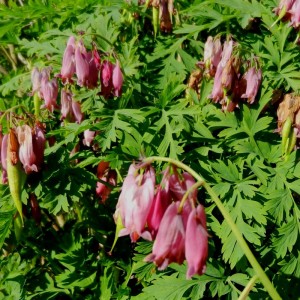
News/Reports
Honeymoon Bay ER #113 Purpose Statement
Ecological reserves are areas selected to preserve representative and special natural ecosystems, plant and animal species, features and phenomena. The key goal of ecological reserves is to contribute to the maintenance of biological diversity and the protection of genetic materials. All consumptive resource uses and the use of motorized vehicles are prohibited.
Most ecological reserves are open to the public for non-destructive observational uses such as nature appreciation, wildlife viewing, and photography. Research and education activities may be carried out but only under permit. Visitors are asked to co-operate in caring for these areas.
See the complete PDF file here: honeymoon
Primary Role
The primary role of Honeymoon Bay Ecological Reserve is to protect a large population of the
rare pink fawn lily (Erythronium revolutum) as well as significant habitat for other wildflowers.
The lily is considered to be uncommon in the province but is common on western Vancouver
Island. It prefers moist alluvial sites in moderately open woodland, particularly containing
deciduous trees such as bigleaf maple and red alder. Such conditions are ideally represented
in the reserve with Sutton Creek winding through the middle and the characteristic plant
association being the big leaf maple / red alder / fawn lily / yellow violettype. The lilies require
four to six years from seed to blooming plant, and the slender corms perish if the leaves are
picked, thus a high level of protection is needed to preserve them.
This 7.5 hectare reserve is located at the edge of the rainforest to the west and the rain shadow
forest to the east, and it protects significant species from both zones. It supports seral
coniferous forest stands in which western hemlock, western red cedar, and Douglas fir are
present. Additional wildflower species include other members of the lily family, western trillium,
red columbine, wild ginger, nightshade, baneberry, vanilla leaf, starflower, Indian hellebore,
Pacific bleeding heart, violet, buttercups,Smith’s fairybells, and several fern species. Part of
the Carmanah-Lake Cowichan corridor, the ecological reserve is used by a diversity of wildlife.
The area attracts many animals passing through this corridor such as Columbian black-tailed
deer, black bear, cougar, gray wolf, birds of prey and songbirds.
Management Issues
Known Management Issue
Response
High use / increased public visitation
leading to litter, trail widening/braiding,
wildflower trampling, and overall disruption
of the wildflower habitat
- Review existing signing needs for boundary marking, regulatory, and interpretation purposes. Clearly communicate expectations and appropriate uses in ecological reserves.
- Increase presence and monitoring of the area todetermine if present use is suitable and manageable. If deemed necessary regulate and control user groups through Park Use Permits.
- Assist Volunteer Warden and local community members with stewardship, maintenance, cleanup, and dealing with other management issues.
- Work with Friends of Ecological Reserves and the local community to conduct an inventory of other potential wildflower viewing opportunities in the
- Work closely with the Cowichan Valley Regional District (CVRD), community members, forest companies, and the Ministry of Forests (MOF) in the provision of recreation opportunities for the Cowichan Lake area. This would ensure that readily accessible, properly designed and operated recreation facilities are maintained and enhanced in the region.
Natural succession is resulting in reduction in population densities of original species, and surrounding forestry activities has altered the drainage which may ultimately affect species survival
- Conduct a site evaluation and species inventory in conjunction with the Volunteer Warden and natural history groups to determine the status of the wildflower populations.
- Undertake a vegetation management plan in conjunction with Gordon Bay Park.
- Review boundaries of ER in conjunction with Gordon Bay Park and to the south side of Sutton Creek to possible achieve more protected values.
- Work with MOF and forest companies to ensure protection of ecological reserve values and drainage patterns.
- Investigate other sites where the pink fawn lily may occur in abundance as possible options for additional protection of the lily.
Role of the ecological reserve in the
protected areas system
- Review the role and viability of the ecological reserve and Investigate options to better protect the values. These options include adding the ecological reserve to Gordon Bay Park, establishing another wildflower ecological reserve nearby, or keeping the ecological reserve status and establishing other wildflower viewing sites nearby.
First Nations interest in medicinal plants found within the ER
- Continue working with First Nations to define traditional activities found in the Cowichan Lake and Valley areas and develop a common understanding
Special Features—Magnificent spring floral display dominated by the pink fawn lilies, high wildflower diversity and density
Representation
Local Recreation
Along the Carmanah/Lake Cowichan corridor local recreation Ecological reserves are not meant for outdoor recreation; however, the reserve is a popular destination in the spring for naturalist groups, local residents, and visitors camping at Gordon Bay Provincial Park. Careful management of human visitation to the ecological reserve is required for protect the flowers.
Special Opportunities There is an opportunity toexplore other wildflower locations to attract visitors to Honeymoon Bay in order to take pressure off the ecological reserve

